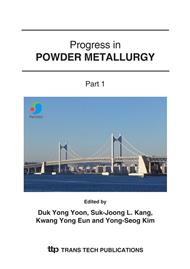p.313
p.317
p.321
p.325
p.329
p.333
p.337
p.341
p.345
Warm Compaction: FEM Analysis of Stress and Deformation States of Compacting Dies with Rectangular Profile of Various Aspect Ratio
Abstract:
The deformation under radial pressure of rectangular dies for metal powder compaction has been investigated by FEM. The explored variables have been: aspect ratio of die profile, ratio between diagonal of the profile and die height, insert and ring thickness, radius at die corners, interference, different insert materials, i. e. conventional HSS, HSS from powders, cemented carbide (10% Co). The analyses has ascertained the unwanted appearance of tensile normal stress on brittle materials, also “at rest”, and even some dramatic changes of stress patterns as the die height increases with respect to the rectangular profile dimensions. Different materials behave differently, mainly due to difference of thermal expansion coefficients. Profile changes occur when the dies are heated up to the temperature required for warm compaction. The deformation patterns depend on compaction temperature and on thermal expansion coefficients.
Info:
Periodical:
Pages:
329-332
Citation:
Online since:
January 2007
Authors:
Price:
Сopyright:
© 2007 Trans Tech Publications Ltd. All Rights Reserved
Share:
Citation:


